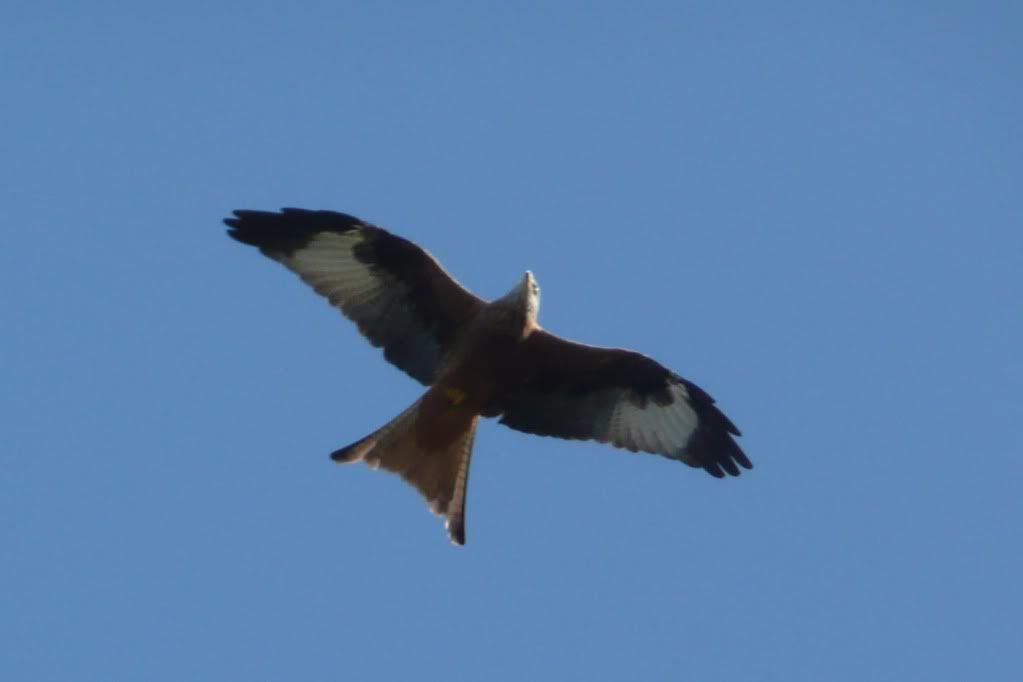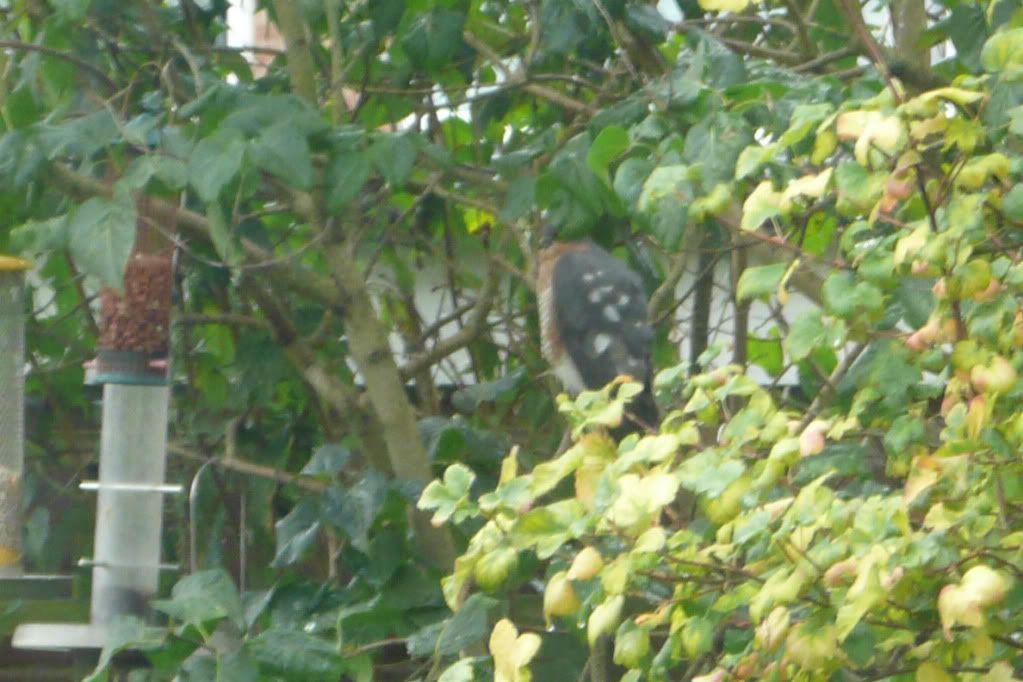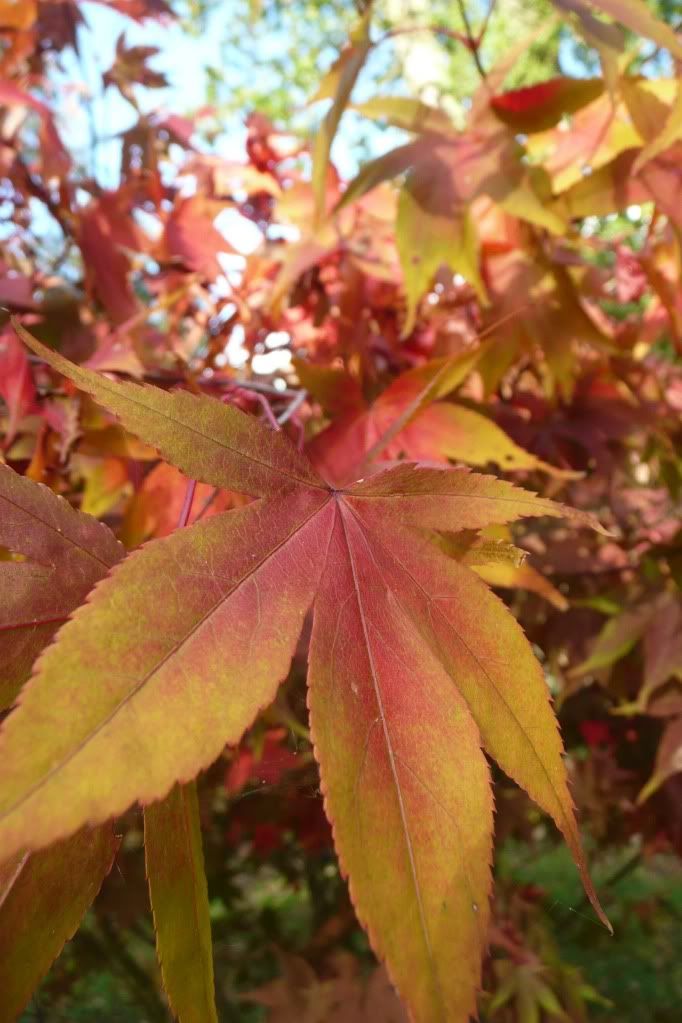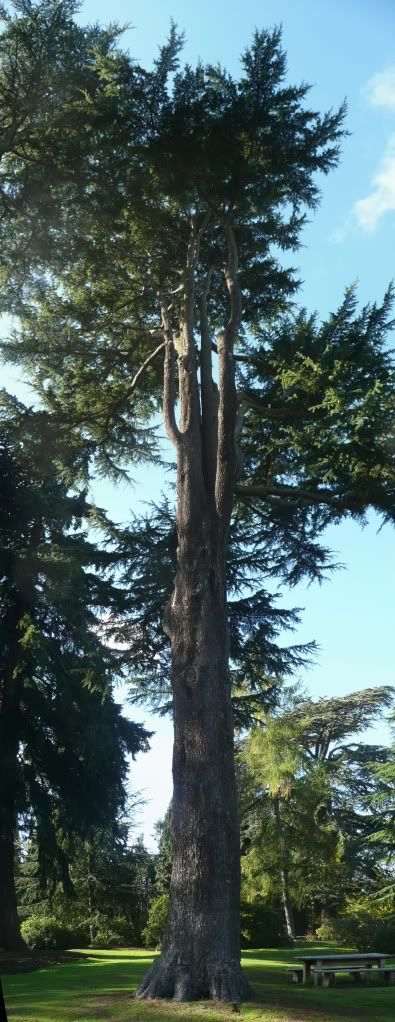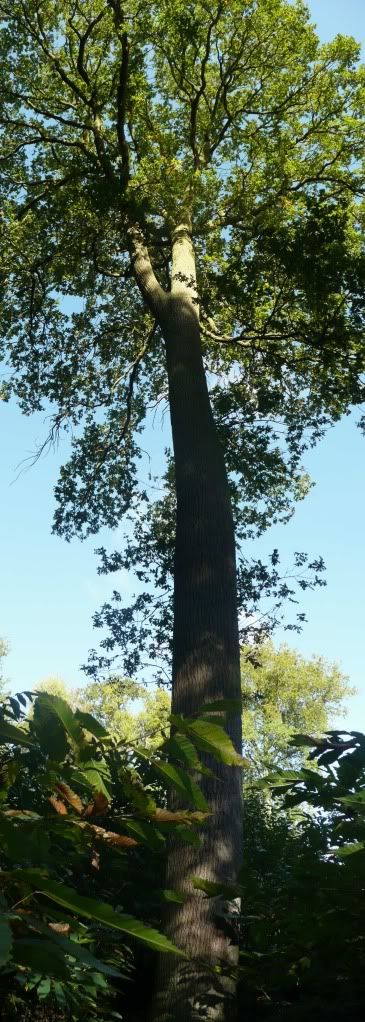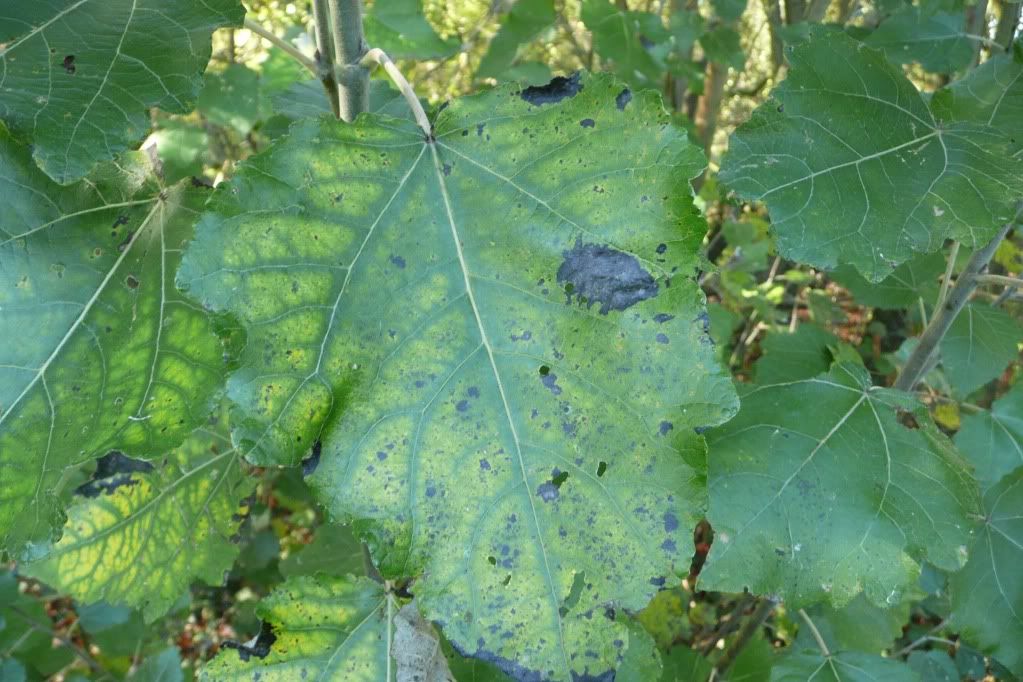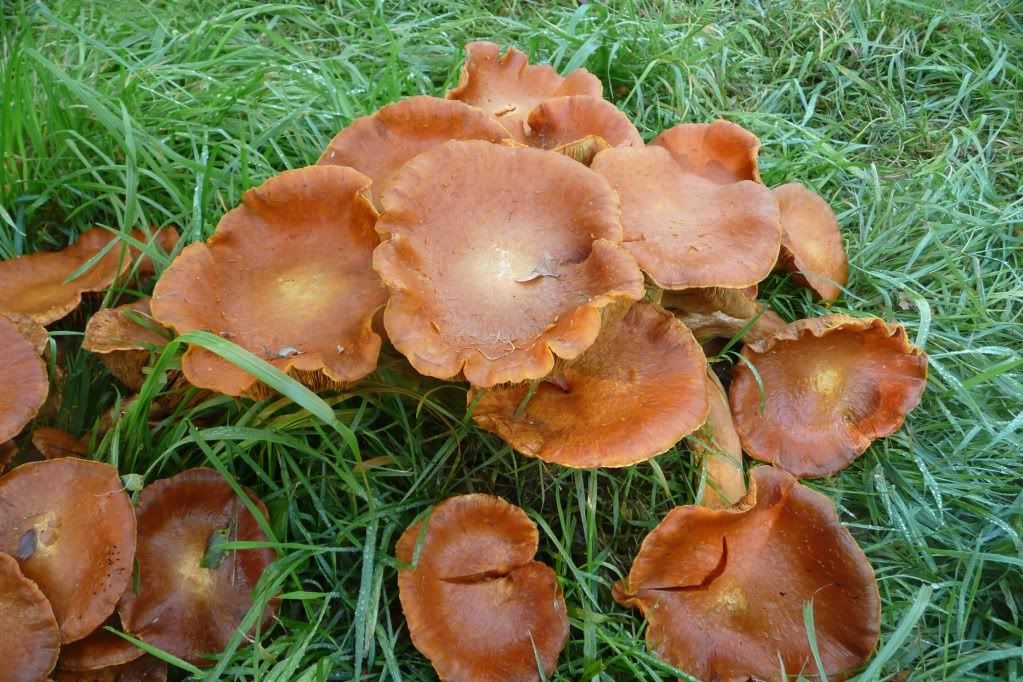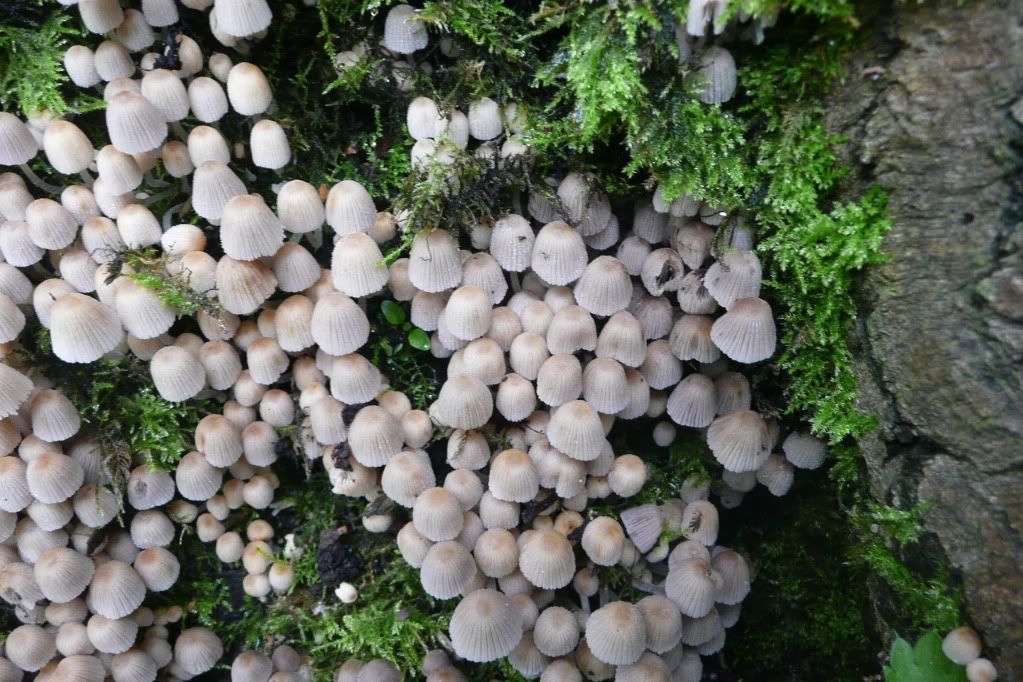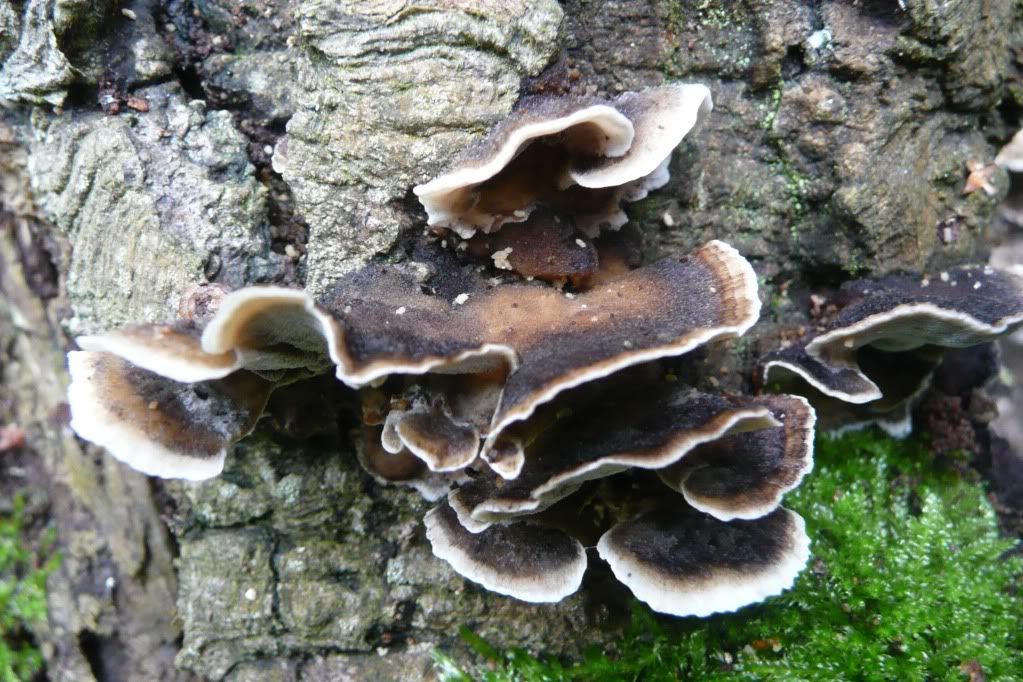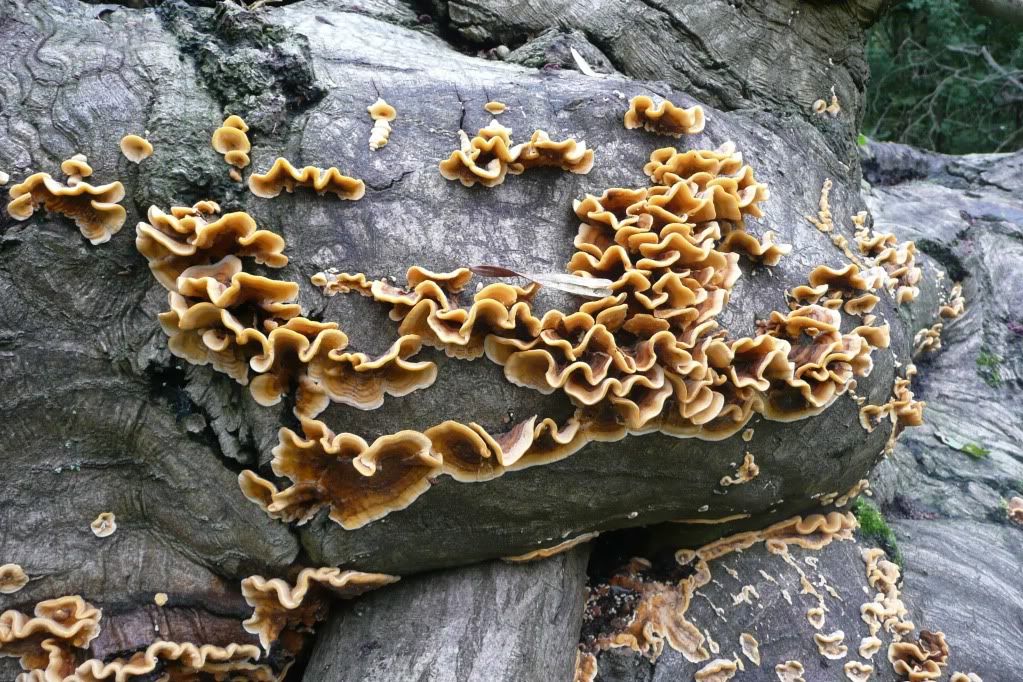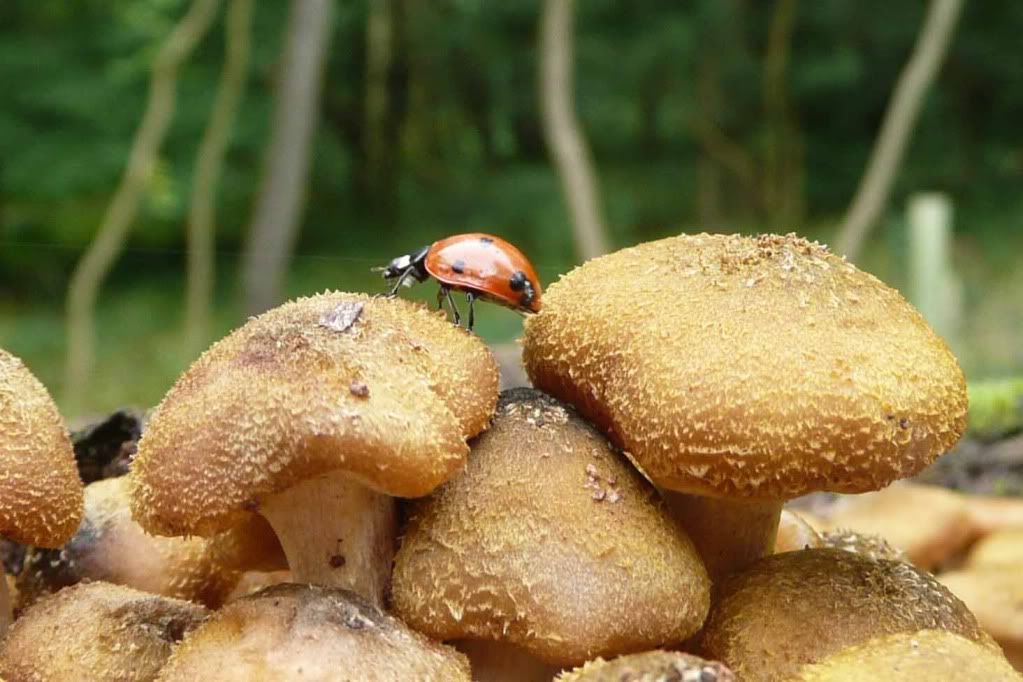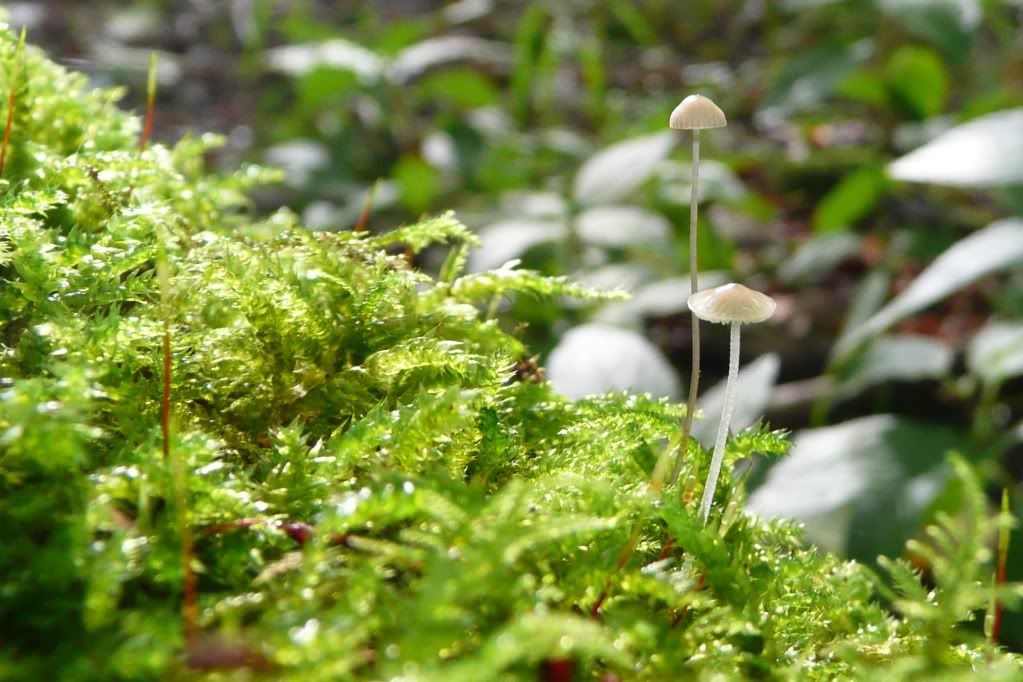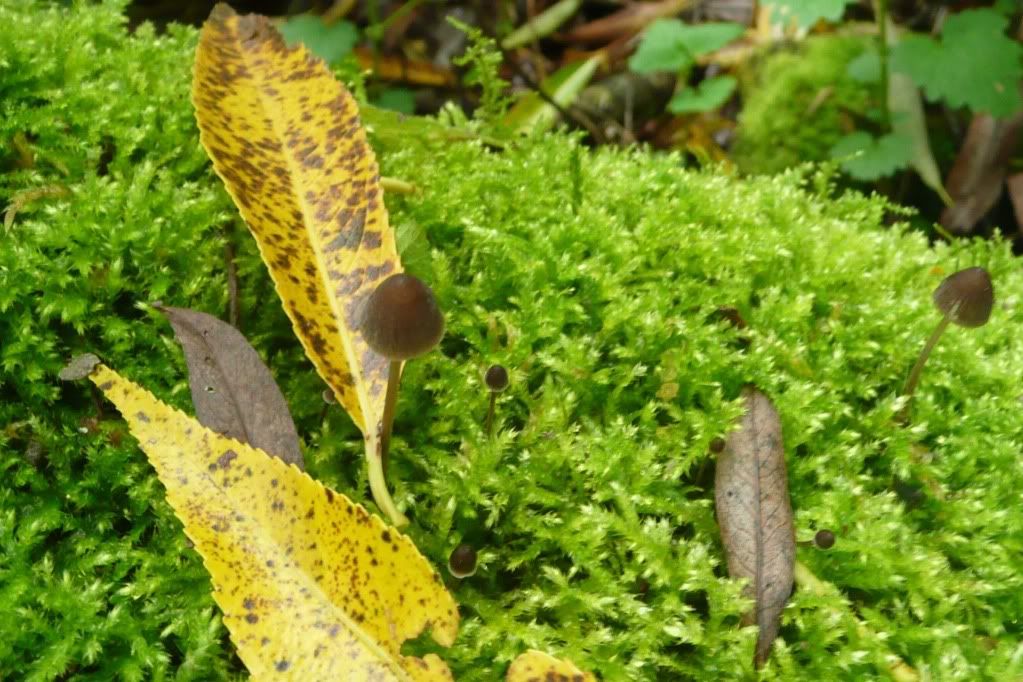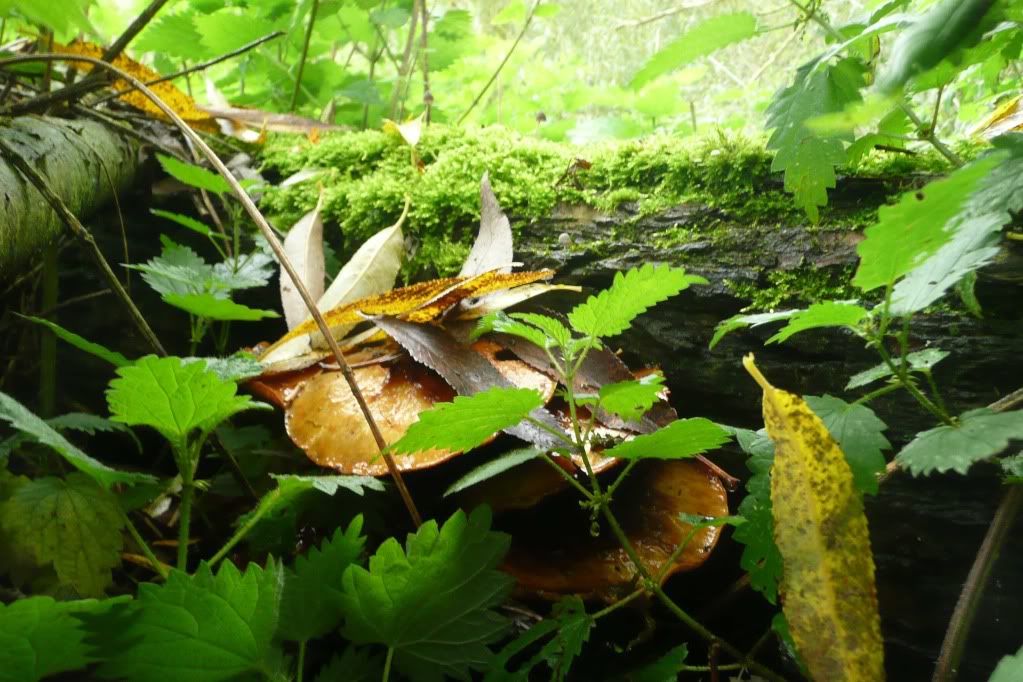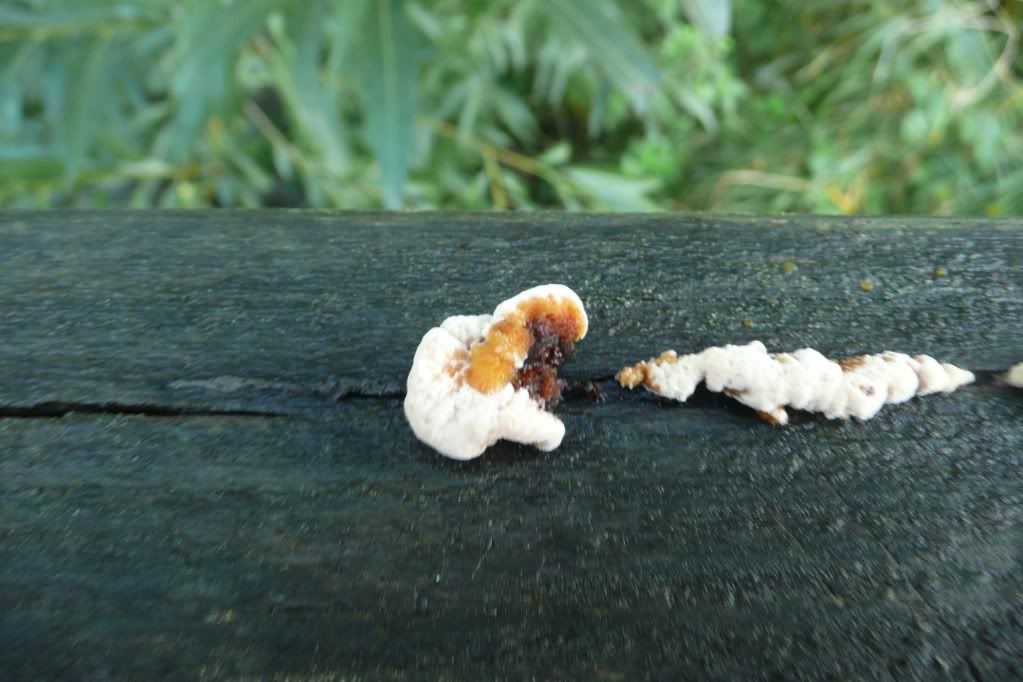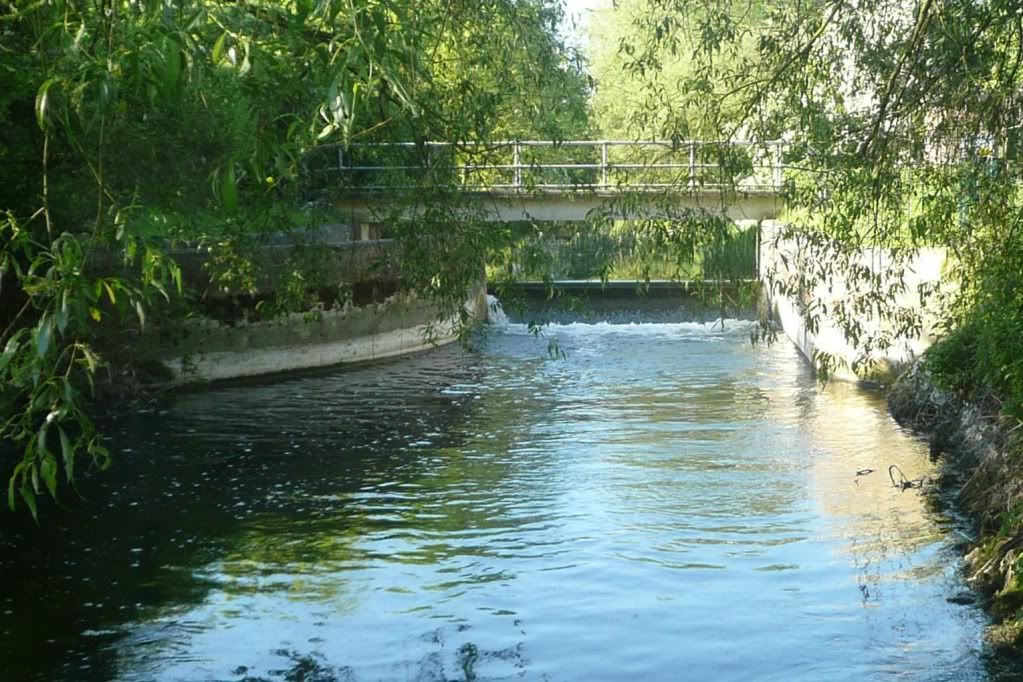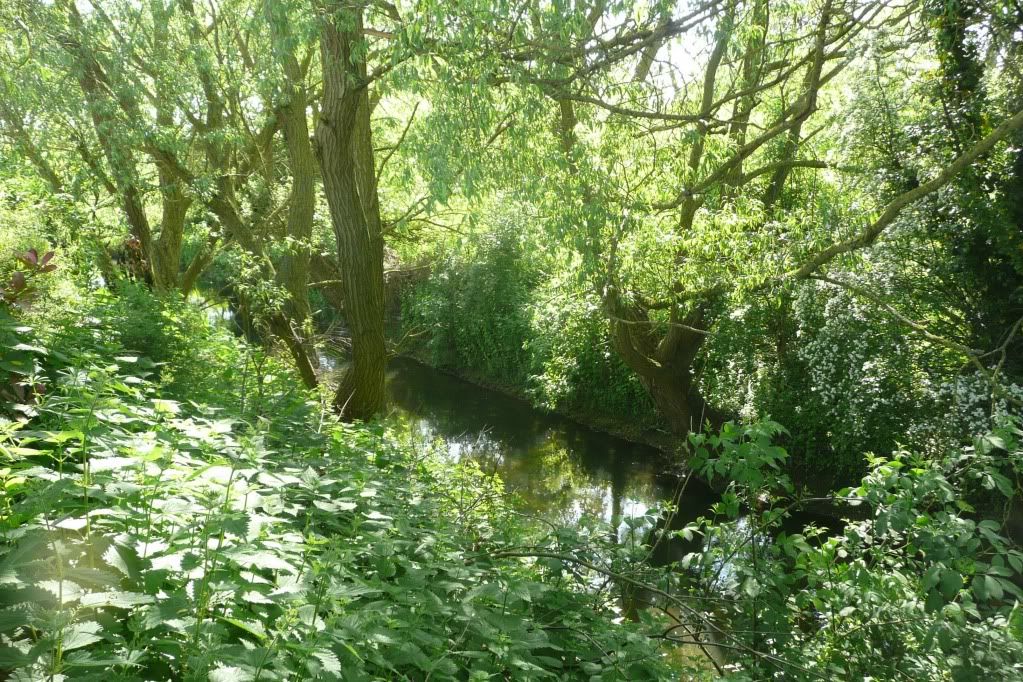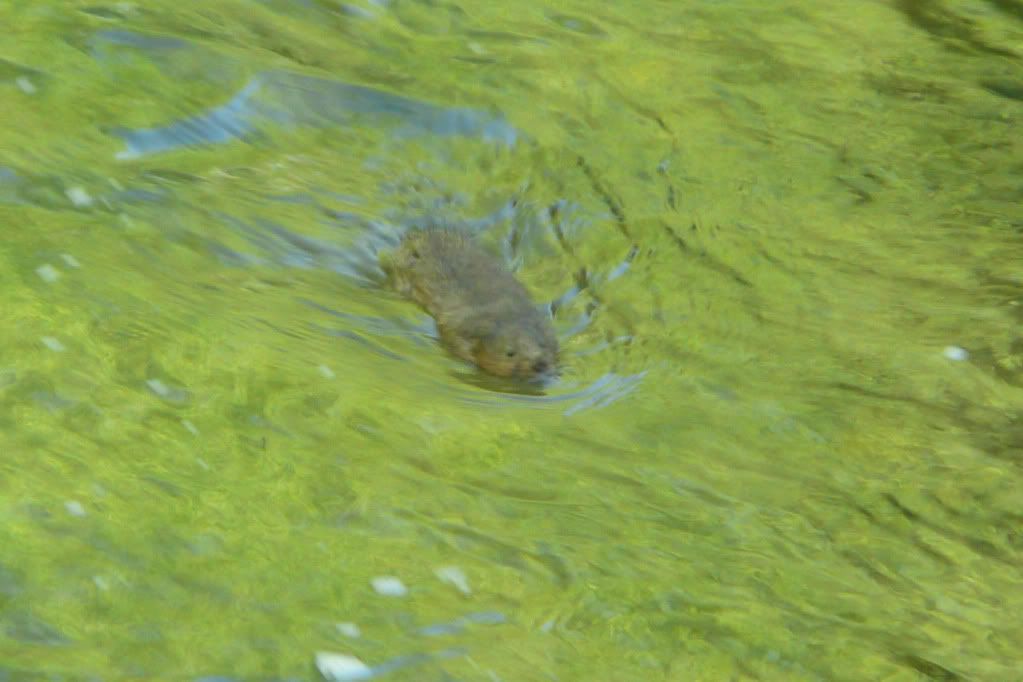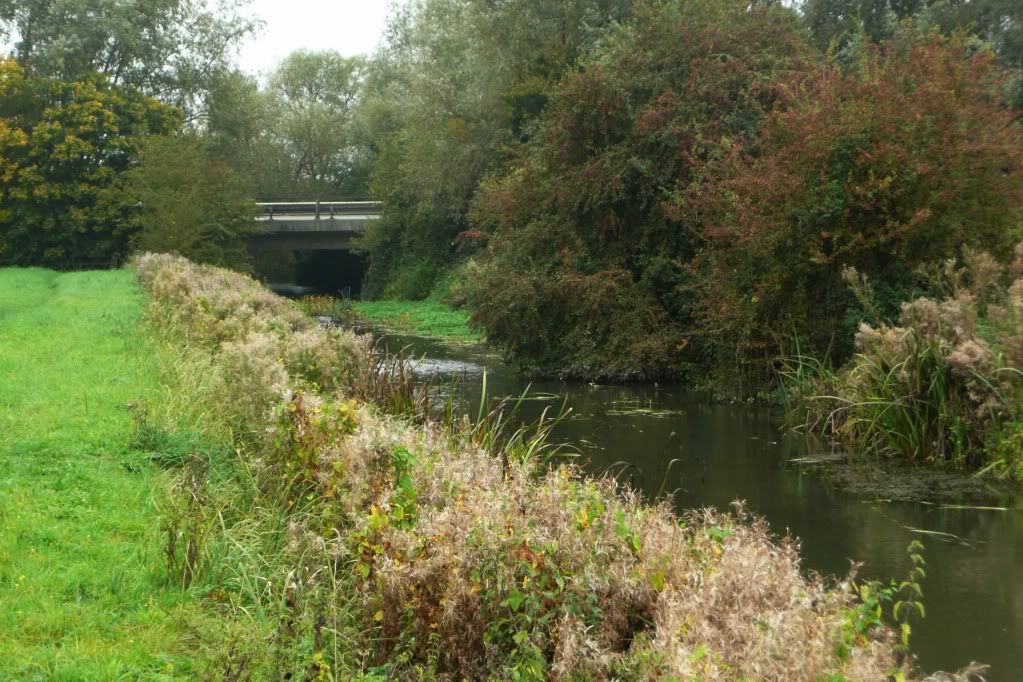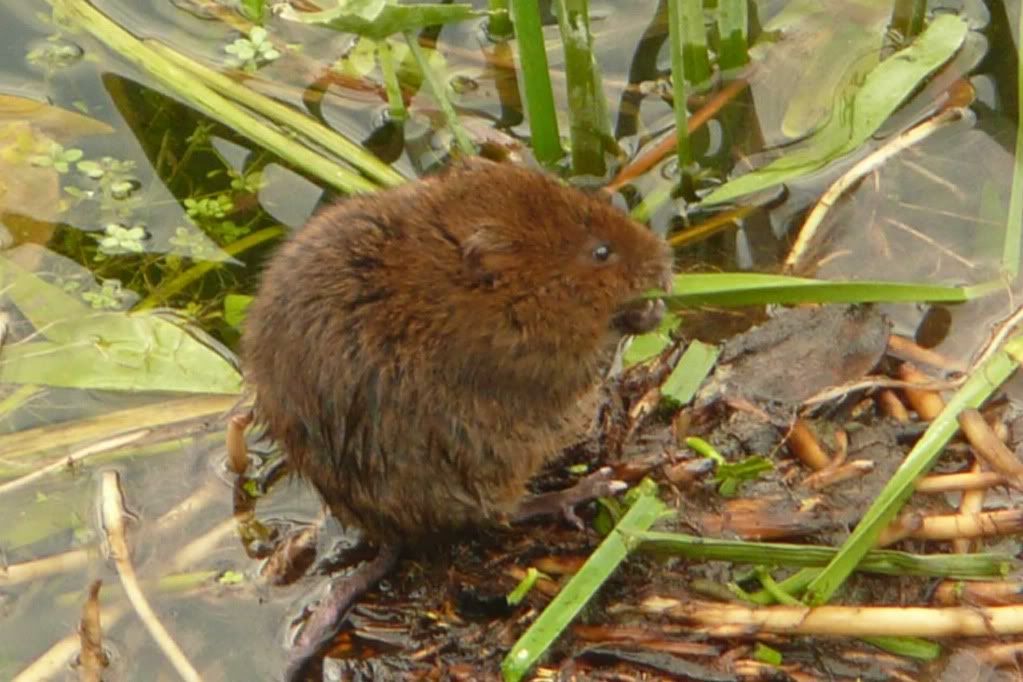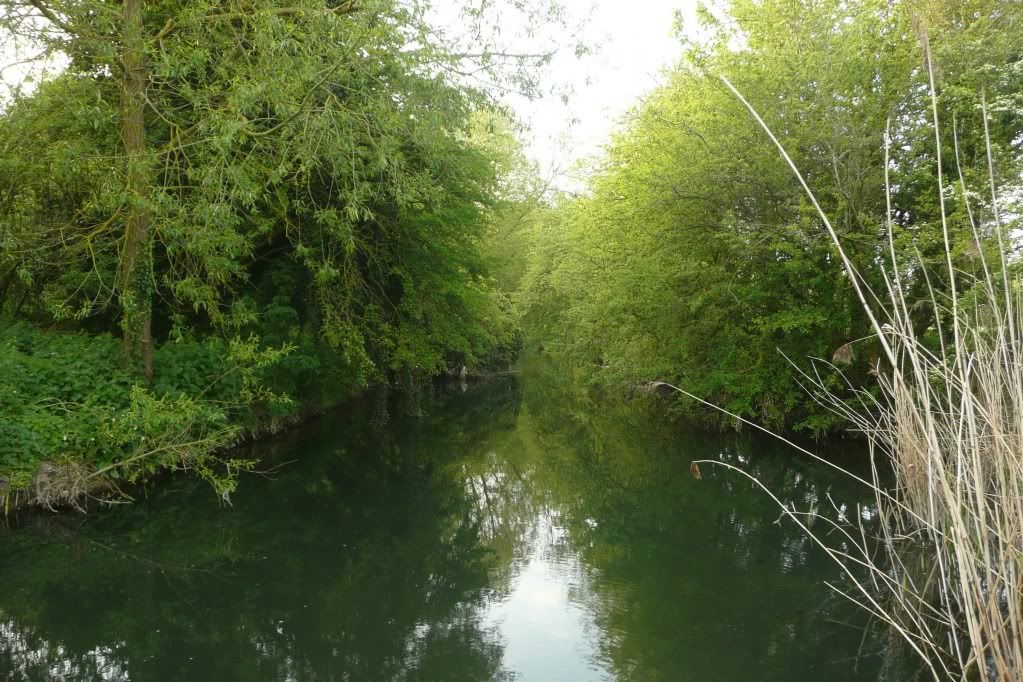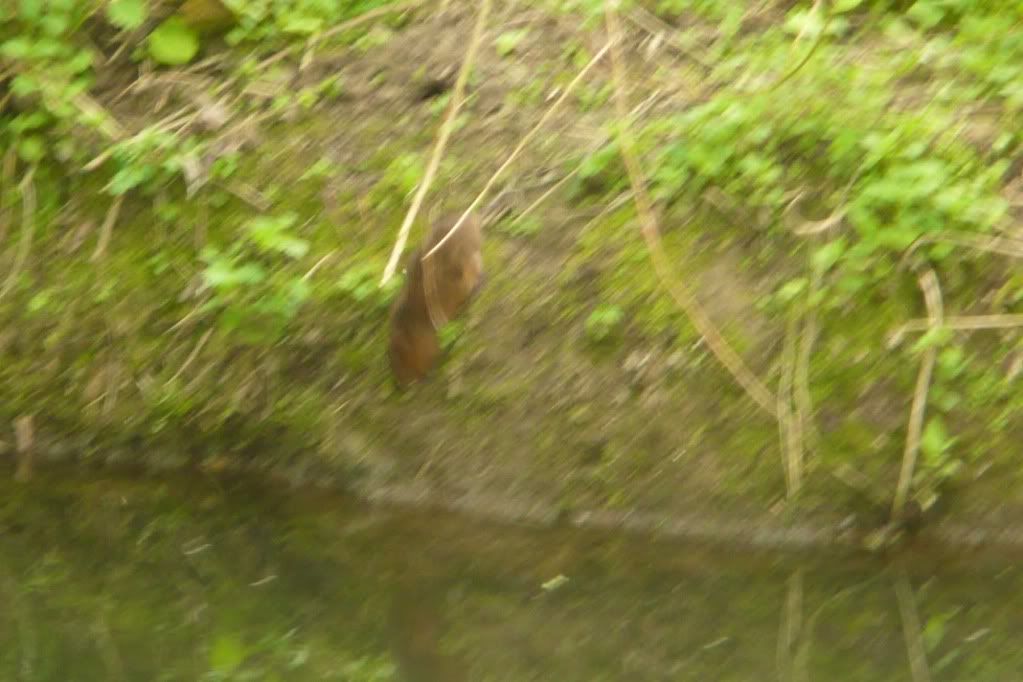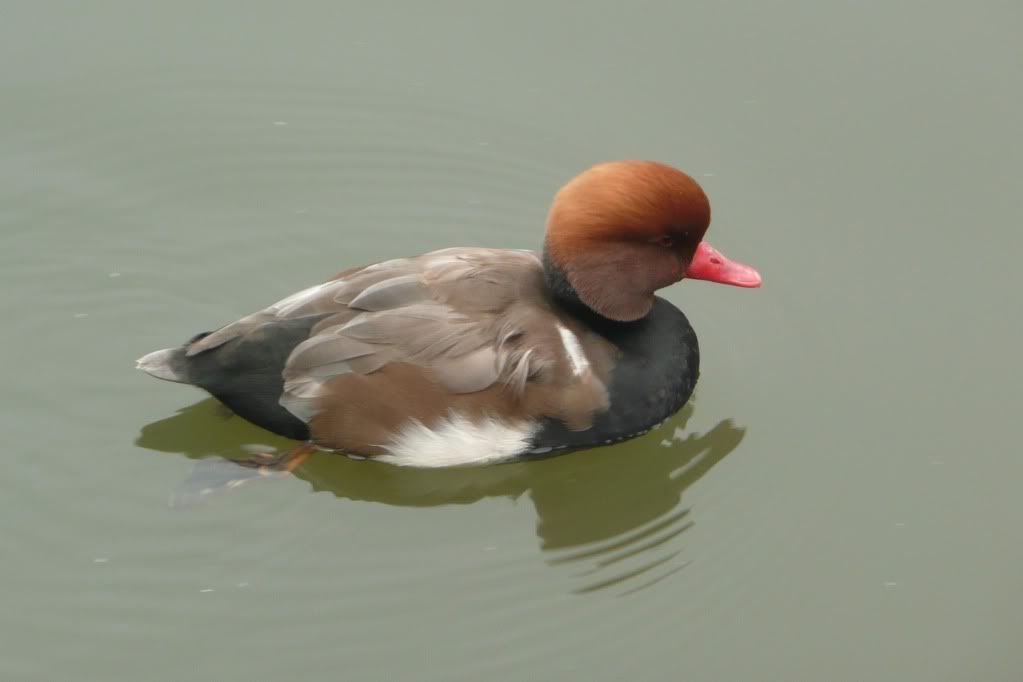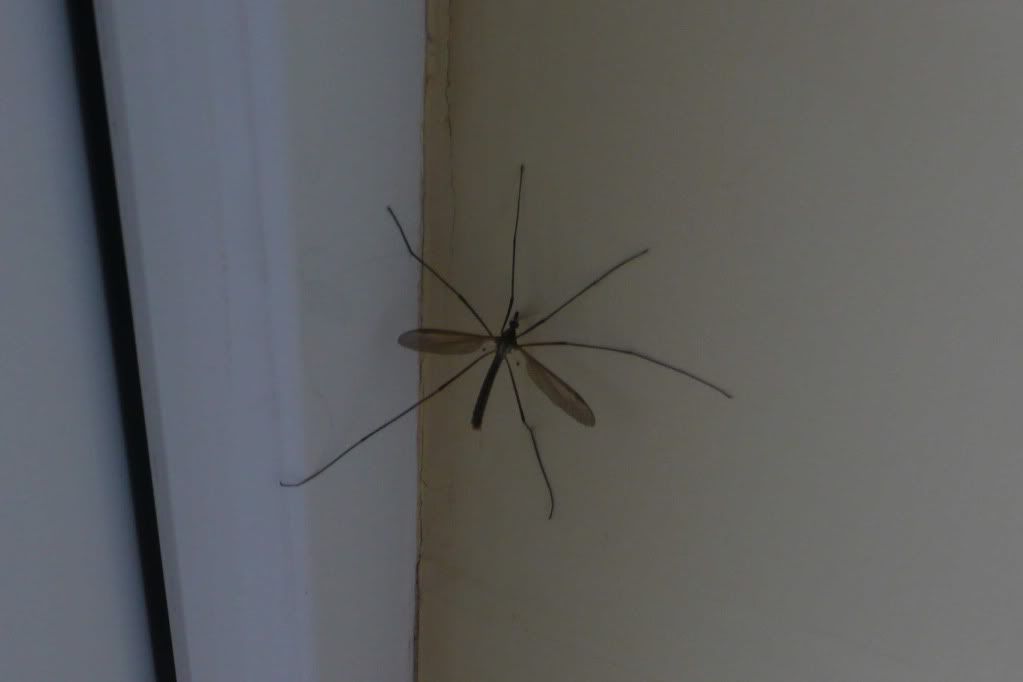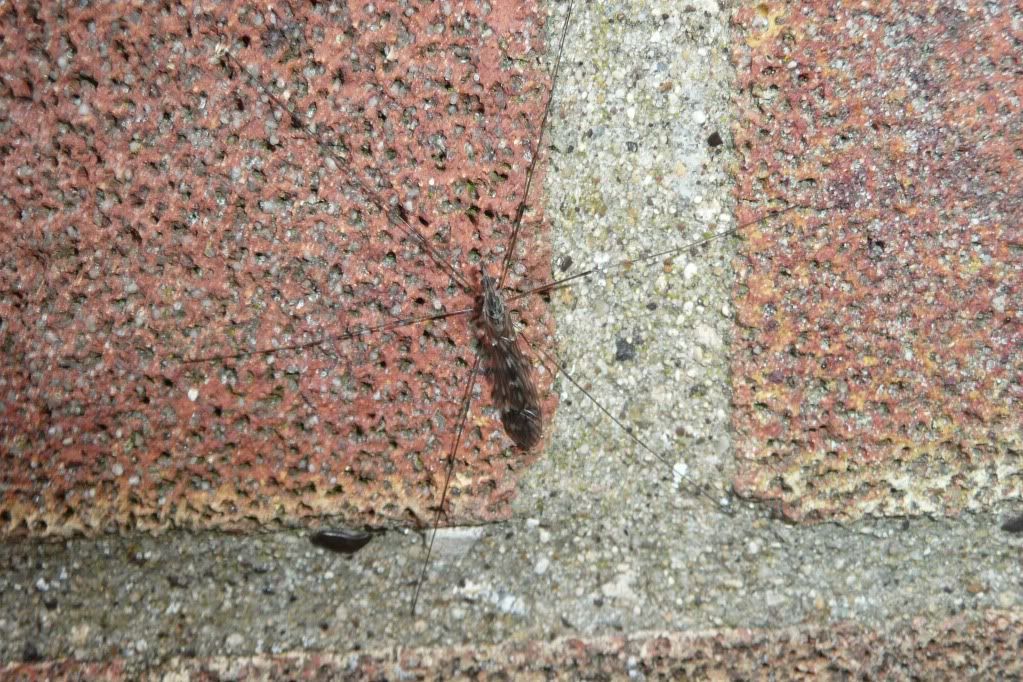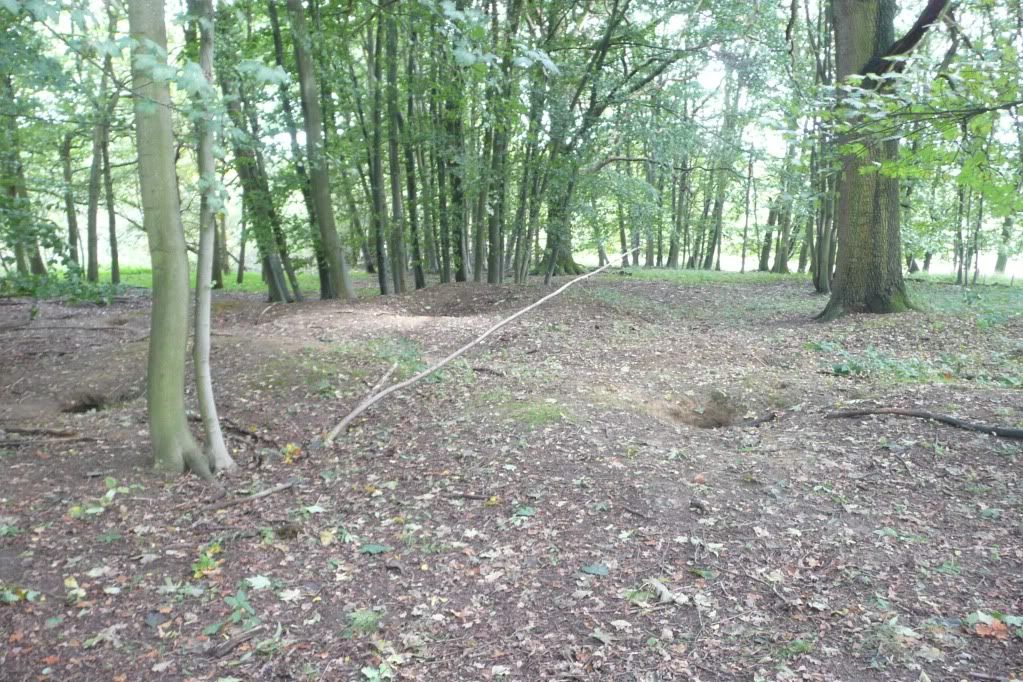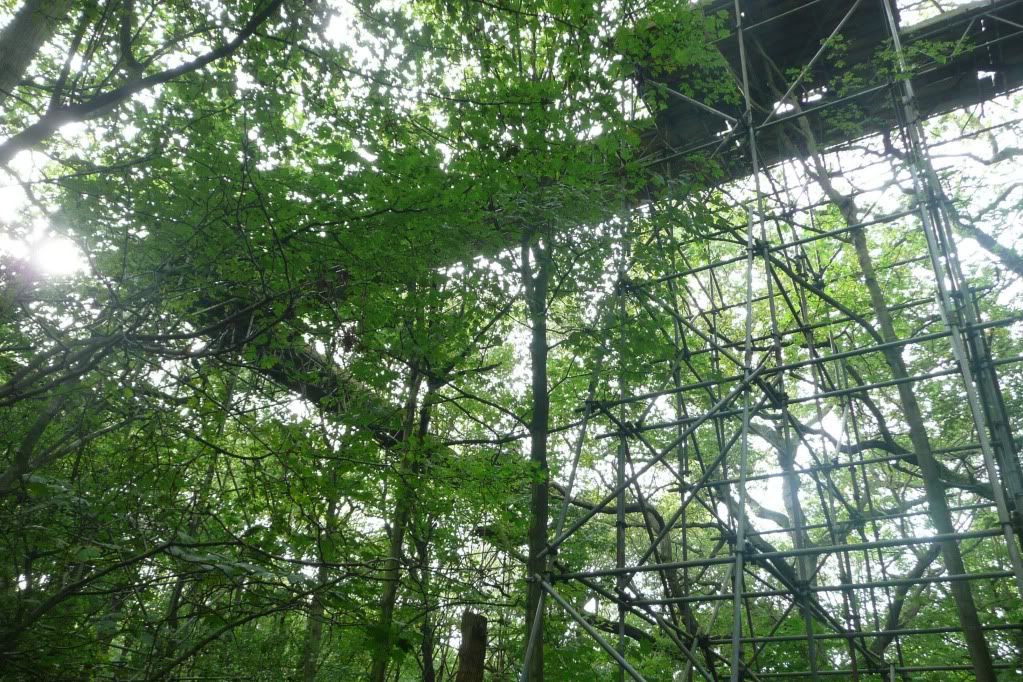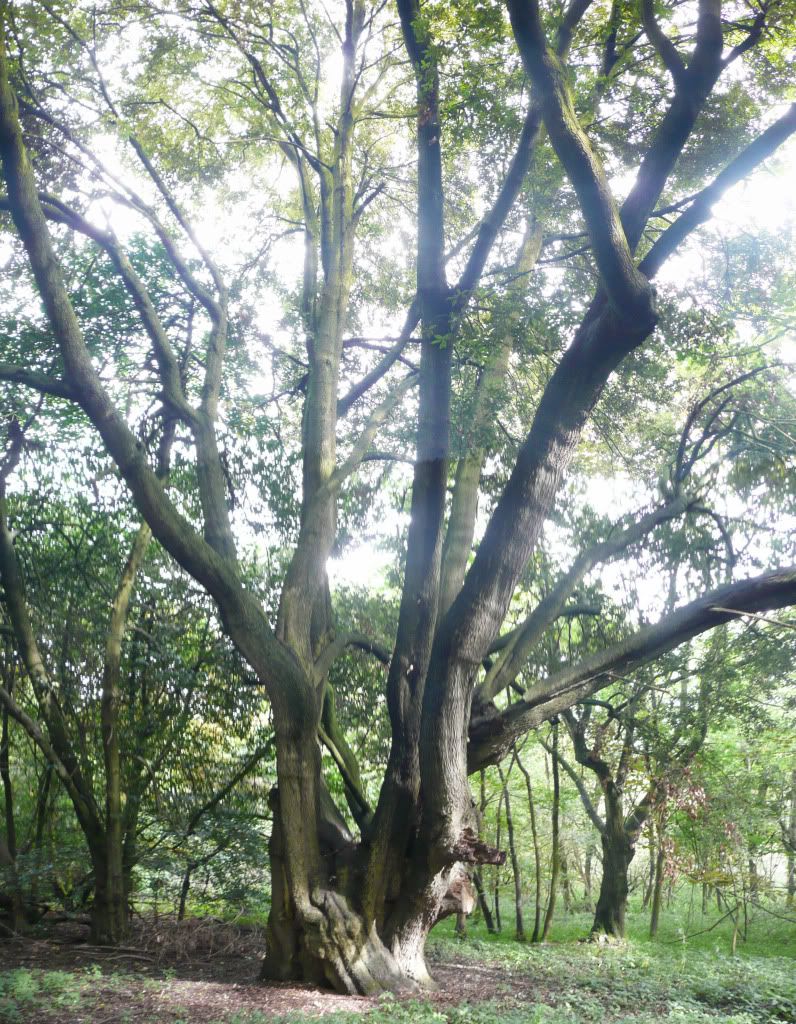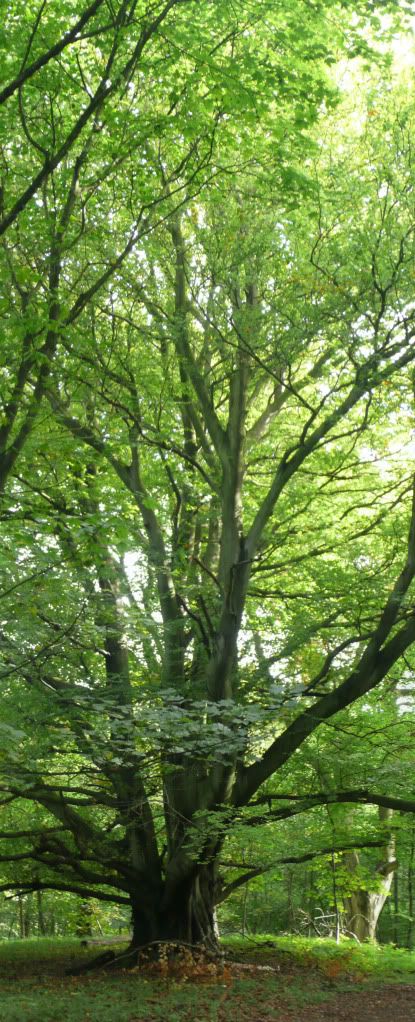Birds of prey have had an impressive recovery in recent years and are an example of how our attitudes to wildife and the environment has changed.
I saw my first buzzard in cornwall and now they are nesting near the Ock and kestrels can frequently be seen hunting over the meadows. In the past week I have had close encounters with two others:
Having been hunted to almost extinction in England at the end of the 19th Centuary, Red Kites are now a common site over Abingdon. In fact most days will guarrante at least one sighting. This is due to a very successful release program in the Chilterns back in the 1980's. The one pictured below was seen over Radley Lakes, where the combination of good reflective light and low flying bird presented an ideal opportunity for a picture.
.
The other bird of prey encountered this week was a male sparrowhawk in the garden. Obviously attracted to the increasing numbers of grain feeding birds like sparrows, goldfinches and dunnocks that are using the bird feeders in the garden.
Unlike red kites, the decline in the sparrowhawks is not attributed to hunting, but pesticide use in the 1950's which was being consumed by their prey. These had the effect of making the egg shells too thin, hence not enough birds hatched.
The population only recovered when these were banned in the 1970's. Unlike the red kites, there has not been reintroduction of sparrowhawks, instead the 40,000 breeding pairs have recovered naturally as the pesticides have slowly declined in the environment.
This picture is slightly blurred as it was taken through a window.
.
.
Despite the recovery in Birds of Prey and their legal protection, they are still suffer from persecution: http://www.rspb.org.uk/ourwork/policy/wildbirdslaw/wildbirdcrime/birdsofprey.aspx
References:
Red Kites: http://www.redkites.co.uk/
RSPB Handbook of British Birds
Birds of Britain: http://www.birdsofbritain.co.uk/bird-guide/sparrowhawk.asp
Wildlife and other things of interest on and around the river Ock in south Oxfordshire
Saturday 30 October 2010
Thursday 28 October 2010
Tall Trees
Located between Abingdon and Oxford, Harcourt Arboretum has been managed by Oxford University as part of it's Botanic Gardens since the late 1960's. The Arboretum was originally created to be part of an impressive entrance to the stately house owned by the Harcourt family, it was sold to University by the last Viscount Harcourt in 1948
Like Wytham Woods (also owned by Oxford University) it is predominately an area for study, with a collection of plants from around the world, including rhododendron and a pinetum of fir, pine and cedar trees as well as an area of restored woodland which has an impressive display of bluebells in spring.
The arboretum is open to the public most days of the week, although a small fee is payable and it is the none native trees - especially the maples - that make it one of the best places in Oxfordshire to see the spectacular autumn colours.
.
.
It's not only the maple trees that are impressive, the cedar, fir and pine trees most be some of the tallest trees in the county and trying to encompass them in one picture does not do them justice, so they are ideal for panoramic tree photos. Where several portrait pictures are stitched together using ArcSoft Panorama maker:
.
.
.
.
As well as the trees and the plants, the other main photographic subject for visitors are the peacocks that can be seen wondering the grounds.
.
Like Wytham Woods (also owned by Oxford University) it is predominately an area for study, with a collection of plants from around the world, including rhododendron and a pinetum of fir, pine and cedar trees as well as an area of restored woodland which has an impressive display of bluebells in spring.
The arboretum is open to the public most days of the week, although a small fee is payable and it is the none native trees - especially the maples - that make it one of the best places in Oxfordshire to see the spectacular autumn colours.
.
.
It's not only the maple trees that are impressive, the cedar, fir and pine trees most be some of the tallest trees in the county and trying to encompass them in one picture does not do them justice, so they are ideal for panoramic tree photos. Where several portrait pictures are stitched together using ArcSoft Panorama maker:
.
.
.
.
As well as the trees and the plants, the other main photographic subject for visitors are the peacocks that can be seen wondering the grounds.
.
Tuesday 26 October 2010
Final Fungal Thoughts
Over the past few posts I've tried to identify a small number of the vast quantity of fungus that can be found in this part of Oxfordshire. Rather than try to identify yet more fungus (which can be somewhat frustrating). I thought the final post on the subject (for this year at least) would look at different types of fungus.
Parasitic: Where a fungus extracts nutrients from a host, but does not offer anything in return, most like this tar spot on a sycamore leaf may kill the leaf, but will not have an adverse affect on the tree.
.
.
Others like the honey fungus can be a lot more damaging and can eventually kill the host tree. There are also fungus which are parasitic on other parasitic fungus.
Saprophytic: Are fungus that derive their nutrients from dead or decaying matter, for example, this fungus growing on horse dung on a cycle path:
.
.
It is highly probable that the spores were consumed by the horse, passing through it's gut and then germinating when released. Not only is this fungus helping to break down the dung, but it also turning it into nutrients in the soil that will be used by plants and trees.
Symbiotic: With symbiotic relationships, the fungus takes carbon from the plant and returns nutrients in the form of nitrogen and phosphorus. This milkcap fungus is growing around the roots of oak trees, in a form of symbiosis known as mycorrhiza (a relationship between a fungus and a tree).
.
.
In his fantastic book on Mushrooms, Roger Phillips recounts an experiment by NASA, where two pine trees were planted in sterile soil - one injected with a symbiotic fungus, the other not. Fifteen years later the tree with the fungus had grown 5 times larger than the none fungal tree.
This is just one example of how fungi are an intrisinic part of our environment and as Roger Phillips goes onto say, once a habitat is destroyed it cannot be replaced by just planting more trees.
References:
Many different sources have been used in the past few posts. I have stayed clear of posting on internet forums as the purpose of these posts is try and identify them myself, even if I have been unsuccessful in the identification.
The following have been invaluable in my identification quest:
Roger Phillips Mushrooms (Book, Website & iPhone App): http://www.rogersmushrooms.com/
Collins complete british mushrooms and toadstools: http://www.harpercollins.co.uk/Titles/36133/collins-complete-british-mushrooms-and-toadstools-paul-sterry-barry-hughes-9780007232246
Wild About Britain Fungi Pages: http://www.wildaboutbritain.co.uk/fungi
Where I think I have identified a fungus I have used google to search for the scientific name and included the most suitable links.
Parasitic: Where a fungus extracts nutrients from a host, but does not offer anything in return, most like this tar spot on a sycamore leaf may kill the leaf, but will not have an adverse affect on the tree.
.
.
Others like the honey fungus can be a lot more damaging and can eventually kill the host tree. There are also fungus which are parasitic on other parasitic fungus.
Saprophytic: Are fungus that derive their nutrients from dead or decaying matter, for example, this fungus growing on horse dung on a cycle path:
.
.
It is highly probable that the spores were consumed by the horse, passing through it's gut and then germinating when released. Not only is this fungus helping to break down the dung, but it also turning it into nutrients in the soil that will be used by plants and trees.
Symbiotic: With symbiotic relationships, the fungus takes carbon from the plant and returns nutrients in the form of nitrogen and phosphorus. This milkcap fungus is growing around the roots of oak trees, in a form of symbiosis known as mycorrhiza (a relationship between a fungus and a tree).
.
.
In his fantastic book on Mushrooms, Roger Phillips recounts an experiment by NASA, where two pine trees were planted in sterile soil - one injected with a symbiotic fungus, the other not. Fifteen years later the tree with the fungus had grown 5 times larger than the none fungal tree.
This is just one example of how fungi are an intrisinic part of our environment and as Roger Phillips goes onto say, once a habitat is destroyed it cannot be replaced by just planting more trees.
References:
Many different sources have been used in the past few posts. I have stayed clear of posting on internet forums as the purpose of these posts is try and identify them myself, even if I have been unsuccessful in the identification.
The following have been invaluable in my identification quest:
Roger Phillips Mushrooms (Book, Website & iPhone App): http://www.rogersmushrooms.com/
Collins complete british mushrooms and toadstools: http://www.harpercollins.co.uk/Titles/36133/collins-complete-british-mushrooms-and-toadstools-paul-sterry-barry-hughes-9780007232246
Wild About Britain Fungi Pages: http://www.wildaboutbritain.co.uk/fungi
Where I think I have identified a fungus I have used google to search for the scientific name and included the most suitable links.
Sunday 24 October 2010
More Fungus
As discuissed in the previous posts there are several types of fungus growing by the Ock, but the budding mycologist doesn't have to venture far from Abingdon to encounter a whole range of fungus. One of the best places to see fungi in autumn is in mixed deciduous woodland, like Wytham Woods for example:
The growing in large clumps on a beech tree, this is possibly 'fairy inkcap'.
A bracket fungus are easy to spot, but less easy to identify, this one is possibly 'turkey tail', which is very common in deciduous woodland.
.
.
Another bracket fungus, growing on a the trunk of a fallen oak tree:
.
This seven spot ladybird is crawling over what could be a cluster of shaggy scalycaps.
.
.
Of the 250 fungus photographs taken over the past two weeks, this is probably my favourite.- although puff balls are fun and the brackets impressive (especially the giant polypore) - there is something elegant and unassuming about such small fungus. These are possibly bonnets, maybe a bulbous bonnet. To confirm this, it would require studying the stem to see if there is a disc at the stem. And given the size of Wytham Woods and the small size of the fungus, I doubt if I would ever find it again.
.
Thursday 21 October 2010
In search of fungus
Although it can be seen throughout the year, autumn is the best time to find the fruiting bodies of fungus .
There are nearly 40 different types of fungus (milkcaps, brittlegills, funnels and brackets to name few). Identification is a complex task done by assessing the cap texture (cracking, wrinkled, downy....); how the gills are attached (adnate, adnexed & sinuate); Gill Arangement (crowded; forked...); habitat (grassland, deciduous, marsh, conifer.. ) and the colours (red, black, brown) don't always help as they can change as the fruiting body grows and wither.
It is easy to understand how it can take a life time to become an expert in fungal identification.
There are over 12,000 recorded species of fungus recorded in the UK and even armed with a field guide (in this case the Collins complete guide to British mushrooms & toadstools and a rather nifty iPod app version of the Roger Phillips Fungus Guide) identification is incredibly difficult.
One of the key ways to identify a fungus is to pick it and study the gills, smell and how it behaves when cut. But as identification for this blog is more for curosity than scientific study and the important role fungus can have in an ecosystem all have been left in situ for others to enjoy and study. All the fungus in this post have been found alongside the river Ock:
.
These small ones are growing on a felled branch of a willow tree, which could make it a 'common bonnet'. But it might not be the dead wood it's feeding off, instead it could be moss on the branch, then it is more likely to be a 'Moss Bell'.
.
.
This fungus growing off the same willow branch has the appearance of a bracket fungus - sticking out and growing perpendicular to the wood, but having spent some time studying the field guides it may be a polypore (maybe a winter polypore). The way to identify it would be check underneath as it polypores do not have gills, instead tubes are used to release their spores. So if opportunity presents itself, I may sneak out with my wife's make up mirror at the weekend and have another look.
.
.
Even the footbridges aren't spared, this is possibly an oyster fungus at an early stage of development:
.
.
Along the Ock valley walk several willow trees have had their branches felled and chipped. This is an ideal habitat for fungus of decaying deciduous trees, so could be 'Sheathed Woodtuft' or a milkcap, maybe 'mild milkcap'
.
.
There are nearly 40 different types of fungus (milkcaps, brittlegills, funnels and brackets to name few). Identification is a complex task done by assessing the cap texture (cracking, wrinkled, downy....); how the gills are attached (adnate, adnexed & sinuate); Gill Arangement (crowded; forked...); habitat (grassland, deciduous, marsh, conifer.. ) and the colours (red, black, brown) don't always help as they can change as the fruiting body grows and wither.
It is easy to understand how it can take a life time to become an expert in fungal identification.
There are over 12,000 recorded species of fungus recorded in the UK and even armed with a field guide (in this case the Collins complete guide to British mushrooms & toadstools and a rather nifty iPod app version of the Roger Phillips Fungus Guide) identification is incredibly difficult.
One of the key ways to identify a fungus is to pick it and study the gills, smell and how it behaves when cut. But as identification for this blog is more for curosity than scientific study and the important role fungus can have in an ecosystem all have been left in situ for others to enjoy and study. All the fungus in this post have been found alongside the river Ock:
.
These small ones are growing on a felled branch of a willow tree, which could make it a 'common bonnet'. But it might not be the dead wood it's feeding off, instead it could be moss on the branch, then it is more likely to be a 'Moss Bell'.
.
.
This fungus growing off the same willow branch has the appearance of a bracket fungus - sticking out and growing perpendicular to the wood, but having spent some time studying the field guides it may be a polypore (maybe a winter polypore). The way to identify it would be check underneath as it polypores do not have gills, instead tubes are used to release their spores. So if opportunity presents itself, I may sneak out with my wife's make up mirror at the weekend and have another look.
.
.
Even the footbridges aren't spared, this is possibly an oyster fungus at an early stage of development:
.
.
Along the Ock valley walk several willow trees have had their branches felled and chipped. This is an ideal habitat for fungus of decaying deciduous trees, so could be 'Sheathed Woodtuft' or a milkcap, maybe 'mild milkcap'
.
.
Many apologises to any mycologists reading, I have spent several hours pouring over field guides and web sites and I have utmost respect for anyone who can identify a fungus. As always not only are corrections are really appreciated.
Some field guides state which fungus are edible, inedible and poisonous, but if one thing is evident from this post, I will not consider eating anything picked in the wild and will continue to purchase my fungus from the supermarket.
Sunday 17 October 2010
Water voles 2010 - Review #3 (upper & lower ocks)
Just beyond the aforementioned weir, the river is divided in two, the upper and lower Ocks:
.
.
As can be seen from the photographs and the 2010 map, the habitat remains as mainly over growing willow trees with minimal sedge and other aquatic plants:
.
.
Fortunately the weir and habitat this has not acted as a barrier for the water voles who have been seen in both the upper and lower ocks this year. They've been seen right next to the weir:
In this case swimming under the footbridge that crosses near the weir:
.
Although grainy (due to lack of light), this picture shows a water vole emerging from it's burrow, but is the best picture I've managed to get on the lower Ock.
.
.
.
As can be seen from the photographs and the 2010 map, the habitat remains as mainly over growing willow trees with minimal sedge and other aquatic plants:
.
.
Fortunately the weir and habitat this has not acted as a barrier for the water voles who have been seen in both the upper and lower ocks this year. They've been seen right next to the weir:
.
View Water voles 2010 in a larger map
.In this case swimming under the footbridge that crosses near the weir:
.
Further upstream, the map shows water voles near the Ock Mill restaurant on the upper Ock and on the corresponding part of the lower Ock (thanks to a tip off by a local dog walker):
.
View Water voles 2010 in a larger map
.
Although grainy (due to lack of light), this picture shows a water vole emerging from it's burrow, but is the best picture I've managed to get on the lower Ock.
.
Friday 15 October 2010
Water voles 2010 - Review #2
To the west of the river is the Ock meadow, around the circumference runs sandford brook and through the middle of it runs an inconspicuous ditch, which may or may not have stagnant water depending upon the weather:
.
.
In 2009, both the ditch and the brook had interesting signs of life:
.
View Water Voles in the River Ock - Abingdon, 2009 in a larger map
.
The yellow pins indicate potential signs of feeding (discussed here: http://viewsoftheock.blogspot.com/2009/04/ditch-life.html). Whilst the purple pin at the north east of the map is where a water vole was inhabiting the ditch and was recorded on film in May last year: http://viewsoftheock.blogspot.com/2009/05/water-vole-motion-picture.html.
Unfortunately 2010 has not been so productive with respect to the ditch and Sandford Brook - this years map shows no signs of life in the ditch, despite studying it several times:
.
View Water voles 2010 in a larger map
. The yellow pin indicates what could have been water vole burrows, but the recent post below shows no obvious signs of life. As for the now deserted ditch, it could have been a water vole just passing through, a colony could have become extinct, or there could still be water voles there and have just been unlucky this year
.
.
In 2009, both the ditch and the brook had interesting signs of life:
.
View Water Voles in the River Ock - Abingdon, 2009 in a larger map
.
The yellow pins indicate potential signs of feeding (discussed here: http://viewsoftheock.blogspot.com/2009/04/ditch-life.html). Whilst the purple pin at the north east of the map is where a water vole was inhabiting the ditch and was recorded on film in May last year: http://viewsoftheock.blogspot.com/2009/05/water-vole-motion-picture.html.
Unfortunately 2010 has not been so productive with respect to the ditch and Sandford Brook - this years map shows no signs of life in the ditch, despite studying it several times:
.
View Water voles 2010 in a larger map
Wednesday 13 October 2010
Water voles 2010 - Review #1
Now the water vole breeding season is over for another and the water voles retreat into the burrows it seems a good opportunity to review this years sightings and surveys.
As there is quite a bit of information, it will be done over several posts - this first one dealing with the river Ock from the A34 to the weir where it forms the upper and lower Ocks:
View Water voles 2010 in a larger map.
Despite a lot of Himalayan Balsam and occasional flooding, this section of the river is ideal for water voles - steep banks for burrows, lots of sedge for cover and food as well as lots of water plants (arrowhead and water crowfoot) for them to feed on in late summer.
It is from the footbridge (towards the bottom of the map) that I saw my first ever baby water vole:
http://viewsoftheock.blogspot.com/2010/07/baby-water-vole.html
And it is on the second meander where I recorded these films:
http://viewsoftheock.blogspot.com/2010/06/water-vole-films.html
And this previously unused picture was taken back in July: .
Dragons teeth Teeth to Weir After the dragons teeth, the banks change from being open to being overcast with willow trees. This has the effect of changing the habitat - no sedge, instead nettles become more common and there are fewer water plants: .
Still, whilst undertaking a BBOWT survey in may, it wast pleasing to have four water vole sightings right next to the weir and was featured in featured in the following posts: http://viewsoftheock.blogspot.com/2010/05/towards-weir.html .
View Water voles 2010 in a larger map
There are less sightings, but it is interesting that the change in habitat has not impeded the water voles in colonising this stretch of the river. Although very fuzzy, this picture taken on this stretch attempts to show a water vole scampering up one of the banks, showing how agile they can be and explain how they can quickly avoid rising water levels: .
As there is quite a bit of information, it will be done over several posts - this first one dealing with the river Ock from the A34 to the weir where it forms the upper and lower Ocks:
A34 to Newcut Mill: This part of the Ock rarely features in this blog; it is where the river flows under the A34, having previously flowed through private land and runs parrallel to the old canal before flowing through the weirs at Newcut Mill - now private houses.
.
.
What is obvious from this part of the map is the lack of any signs of feeding, latrines, burrows or sightings:
View Water Voles in the River Ock - Abingdon, 2009 in a larger map
There are several possible explanations, the bridge itself is an obvious barrier to any water voles moving upstream, there is obviously no vegetation under it and it has vertical concrete banks. The weirs at Newcut Mill could also act as barriers to water voles moving downstream. Of course, despite being assessed once a month (as I go look for otter spraints), I could have just been unlucky or not observant enough.
Newcut Mill to the Dragons Teeth
The section of the river from Newcut Mill to the dragons teeth (constructed in world war 2 to impede invading tanks) has often featured in this blog:
.
.
In 2009 there were numerous sightings along this stretch and seemed to be the main water vole colony on the ock:
View Water Voles in the River Ock - Abingdon, 2009 in a larger map
Like a lot of small rivers the Ock is prone to flooding and high water levels and although the river did not burst it's banks in winter it was very high. I've been interested to see how water voles coped with this and they seem to have survived well, as can be seen in the 2010 map (in fact I stopped putting pins in it).
.
What is obvious from this part of the map is the lack of any signs of feeding, latrines, burrows or sightings:
View Water Voles in the River Ock - Abingdon, 2009 in a larger map
There are several possible explanations, the bridge itself is an obvious barrier to any water voles moving upstream, there is obviously no vegetation under it and it has vertical concrete banks. The weirs at Newcut Mill could also act as barriers to water voles moving downstream. Of course, despite being assessed once a month (as I go look for otter spraints), I could have just been unlucky or not observant enough.
Newcut Mill to the Dragons Teeth
The section of the river from Newcut Mill to the dragons teeth (constructed in world war 2 to impede invading tanks) has often featured in this blog:
.
.
In 2009 there were numerous sightings along this stretch and seemed to be the main water vole colony on the ock:
Like a lot of small rivers the Ock is prone to flooding and high water levels and although the river did not burst it's banks in winter it was very high. I've been interested to see how water voles coped with this and they seem to have survived well, as can be seen in the 2010 map (in fact I stopped putting pins in it).
View Water voles 2010 in a larger map.
View Water voles 2010 in a larger map
.
The next posts will focus on the upper and lower ocks as well as the Ock meadow & Sandford brook.
Sunday 10 October 2010
Sunday Morning Twitching
I'm not a twitcher or a birder (I'm not much of a naturalist either), but a walk along the Thames on Wednesday evening (and backstreeter is right, the Abingdon waterfront does take some beating) I noticed something unusual swimming on the river and ventured back this morning to see if I could find it.
I eventually caught up with it as it swam under the Abingdon bridge and towards the upper reaches hotel and my suspicions were correct, it was Red Crested Pochard:
.
.
Consulting the RSPB Handbook of British Birds, there are only 50 breeding pairs in the UK and there are some migrants from Europe. But as there didn't seem to be any others on the Thames, it is highly probably that this one escaped from captivity.
Back in January, Martin posted a comment asking if there could be red crested pochards on the Thames and although ten moths late in answering, I can confirm Martin, you were right.
I eventually caught up with it as it swam under the Abingdon bridge and towards the upper reaches hotel and my suspicions were correct, it was Red Crested Pochard:
.
.
Consulting the RSPB Handbook of British Birds, there are only 50 breeding pairs in the UK and there are some migrants from Europe. But as there didn't seem to be any others on the Thames, it is highly probably that this one escaped from captivity.
Back in January, Martin posted a comment asking if there could be red crested pochards on the Thames and although ten moths late in answering, I can confirm Martin, you were right.
Thursday 7 October 2010
Tipulidaeophobia
Although they can be seen in summer, one of the obvious signs of autumn is appearance of crane-flies. Having spent the past 12 months as larvae (known as leatherjackets) living under soil and eating the roots and stems of grasses (much to the annoyance of many gardeners) they emerge in their adult form in early September and can often be seen up to the first frost of the year.
Crane-flies are the family Tipulidae and there are over three hundred different members - their distinguishing features being the long abdomen and a V shaped grove on the thorax.
They range in size from the mosquito sized to the classic 'daddy longlegs', like this Tipula Maxima residing on our patio door:
.
.
Another common variety is what seems to be a 'spotted crane fly', with it's wings folded rather than outstretched. Unfortunately, unlike butterflies there are no well illustrated field guides to crane-flies, so please correct me if I've miss-identified).
Correction: This is not actually a crane-fly, but a member of the Limoniidae family (possibly Limonia nebeculosa) Thanks to Wild About Britain for the identification.
.
.
Unlike some adult insects (mayfly, for example) crane-flies do have mouth parts and can feed on nectar, but quite often they will breed and die without feeding.
This blog post actually has been an ordeal to write as I have a profound fear of crane-flies. Hence the title,only two pictures and a complete lack of macro photographs - when I was young I couldn't even look at a picture of one.
I had hoped taking photographs and researching would help me understand and appreciate them and although I no longer have panic attacks, I still absolutely loath the creature.
Crane-flies are the family Tipulidae and there are over three hundred different members - their distinguishing features being the long abdomen and a V shaped grove on the thorax.
They range in size from the mosquito sized to the classic 'daddy longlegs', like this Tipula Maxima residing on our patio door:
.
.
Another common variety is what seems to be a 'spotted crane fly', with it's wings folded rather than outstretched. Unfortunately, unlike butterflies there are no well illustrated field guides to crane-flies, so please correct me if I've miss-identified).
Correction: This is not actually a crane-fly, but a member of the Limoniidae family (possibly Limonia nebeculosa) Thanks to Wild About Britain for the identification.
.
.
Unlike some adult insects (mayfly, for example) crane-flies do have mouth parts and can feed on nectar, but quite often they will breed and die without feeding.
This blog post actually has been an ordeal to write as I have a profound fear of crane-flies. Hence the title,only two pictures and a complete lack of macro photographs - when I was young I couldn't even look at a picture of one.
I had hoped taking photographs and researching would help me understand and appreciate them and although I no longer have panic attacks, I still absolutely loath the creature.
Sunday 3 October 2010
The way through the woods
The weather on Saturday was just perfect for a walk in the woods and where better to walk than Wytham. As mentioned previously in this blog, Wytham Woods is a mixed woodland, consisting of beech, oak and non native trees and is to the west of Oxford and is managed by the University of Oxford Wildlife Conservation Unit, hence a permit is required to visit:
As the woods are used extensively for research, there are many pathways but not many visitors:
.
.
The woods are an 'open air laboratory' and among the research subjects is the sizeable badger population, where regular recordings of weight, facial markings and rectal temperature make these badgers probably some of the most studied in the world. There are several badger setts and some are obvious from the footpaths.
.
.
Other areas of research include the effect of deer on bird populations; foods eaten by wood mice; and leaf litter decomposition. As a result of this research, experimental apparatus can be seen throughout the woods, from bird boxes used to measure great tit populations to a huge walk way to assess the affects of climate change on the tree canopy:
.
.
The mixed woodland consists of oak, pollard beech and coppiced hazel and present an opportunity to try and create some panoramic photographs of the beech trees:
.
As the woods are used extensively for research, there are many pathways but not many visitors:
.
.
The woods are an 'open air laboratory' and among the research subjects is the sizeable badger population, where regular recordings of weight, facial markings and rectal temperature make these badgers probably some of the most studied in the world. There are several badger setts and some are obvious from the footpaths.
.
.
Other areas of research include the effect of deer on bird populations; foods eaten by wood mice; and leaf litter decomposition. As a result of this research, experimental apparatus can be seen throughout the woods, from bird boxes used to measure great tit populations to a huge walk way to assess the affects of climate change on the tree canopy:
.
.
The mixed woodland consists of oak, pollard beech and coppiced hazel and present an opportunity to try and create some panoramic photographs of the beech trees:
.
.
As well as impressive trees, there are also impressive views:
.
.
More information on Wytham Woods can be found at the WCRU website:
Subscribe to:
Posts (Atom)
